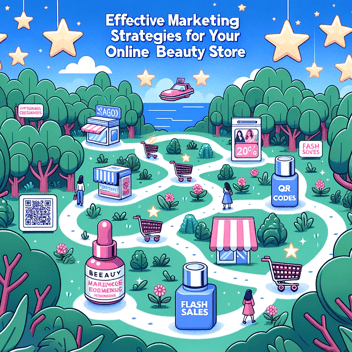
Sparkling Sustainability: The Rise of Eco-Friendly Jewelry Brands
This post may contain affiliate links, which means I may receive a commission if you click a link and purchase something that I have recommended. Thank you!
The world of jewelry has been glittering for centuries, but not without a cost. The traditional jewelry-making process is known for its adverse environmental impact, from destructive mining practices to hazardous chemical usage. However, with the rise of eco-friendly jewelry brands, the industry is seeing a significant shift towards sustainability. This transition is not just a passing trend but a necessary move to preserve the environment and promote ethical practices in jewelry production.
Introduction to Eco-Friendly Jewelry
Defining Eco-Friendly Jewelry
Eco-friendly jewelry, also known as sustainable or ethical jewelry, is all about creating beautiful pieces with minimal negative impact on the environment. This entails the use of recycled or reclaimed metals, lab-grown gemstones, and adhering to ethical sourcing and labor practices.
Rise in Popularity
The last decade has seen a significant rise in the popularity of eco-friendly jewelry. The modern consumer, enlightened about the environmental cost of traditional jewelry-making, is leaning towards brands that align with their values. This shift is driving more jewelry brands to adopt sustainable practices to meet the growing demand.
Transition towards Sustainability
The transition towards sustainability in the jewelry industry is a response to the broader global movement towards environmental responsibility. It's not merely about following a trend but about taking a stand for what's right.
Spotlight on Eco-Friendly Jewelry Brands
Eco-friendly jewelry brands are carving a niche for themselves in the market by blending creativity with sustainability. Here are a few notable brands making waves in the industry:
- Agmes: Known for their geometric, modern designs created from recycled metals.
- Kinraden: A brand recognized for its use of recycled silver and sustainably sourced stones.
- MiaDonna: Renowned for their lab-grown diamonds and commitment to ethical practices.
- VRAI: A brand that prides itself on zero-emission, lab-grown diamonds.
- Astor + Orion: Their use of recycled metals and ethical manufacturing practices set them apart.
When shopping for jewelry, ensuring a seamless experience is crucial. Learn more about enhancing your online shopping experience here.
Materials Utilized
Recycled or Reclaimed Metals
One of the significant steps towards sustainability is the use of recycled or reclaimed metals in jewelry making. It reduces the demand for newly mined metals, consequently reducing the environmental footprint of mining operations.
| Metal Type | Environmental Impact of Mining | Benefits of Recycling |
|---|---|---|
| Gold | Soil erosion, Water contamination | Reduced land and water pollution |
| Silver | Habitat destruction, Air pollution | Lowered greenhouse gas emissions |
| Platinum | Deforestation, Toxic waste | Resource conservation |
Lab-Grown Diamonds and Vintage Gems
Lab-grown diamonds are a sustainable alternative to traditionally mined diamonds, having a significantly lower environmental impact. Additionally, the use of vintage gems and stones in new pieces is a practice that promotes recycling and reduces waste.
Ethical Sourcing and Practices
Ethical sourcing and transparency in supply chains are crucial for building trust with consumers. Brands that are transparent about their sourcing and manufacturing practices are gaining popularity among eco-conscious buyers.
Implementing ethical practices isn't just about compliance; it's about setting a standard in the industry. It reflects a brand's commitment to environmental sustainability and social responsibility. Learn more about promoting sustainable practices through your website here.
Environmental Impact
The switch to eco-friendly jewelry is about more than just the final product. It's about the entire lifecycle of the piece, from sourcing to production, and even packaging. Here's a look at the environmental impact of eco-friendly jewelry brands compared to traditional ones:
| Aspect | Traditional Jewelry | Eco-Friendly Jewelry |
|---|---|---|
| Carbon Footprint | High due to mining and refining processes | Low due to recycled materials and ethical sourcing |
| Water Usage | High due to mining operations | Low due to recycled materials and ethical sourcing |
| Chemical Use | Hazardous chemicals used in extraction and processing | Minimal to no chemical use |
Consumer Perspective
The modern consumer is well-informed and values transparency and sustainability. The preference for eco-friendly jewelry is growing as people seek to align their purchasing decisions with their values. With every purchase, they aim to contribute to a larger cause, making a statement against the unethical practices prevalent in the traditional jewelry industry.
Challenges and Future Outlook
Despite the growing popularity, eco-friendly jewelry brands face several challenges. The high cost of ethical sourcing, the struggle against established traditional brands, and the lack of consumer awareness are hurdles on the path to sustainability. However, with continued education and the evolving preferences of consumers, the future looks bright for eco-friendly jewelry brands.
The outlined journey towards sparkling sustainability showcases a promising pathway for the jewelry industry. As eco-friendly practices gain traction, it's only a matter of time before sustainability becomes the norm, not the exception, in the dazzling world of jewelry.
Certification and Industry Standards
In a bid to uphold and promote sustainability, several certifications and industry standards have been established. These certifications validate the claims of eco-friendly jewelry brands, ensuring that they adhere to ethical sourcing, fair labor practices, and environmental responsibility.
Fairmined and Fairtrade Certifications
These certifications are pivotal in ensuring that the metals used in jewelry are sourced responsibly. They advocate for better working conditions and fair pay for miners. Additionally, they contribute to community development and environmental protection in mining regions.
Kimberley Process Certification Scheme
This scheme aims to stem the flow of conflict diamonds. By ensuring that diamonds are conflict-free, the Kimberley Process promotes ethical diamond sourcing, which is crucial for the integrity of eco-friendly jewelry brands.
Incorporating these certifications on your website can boost consumer trust. Learn more about showcasing certifications on your website here.
Educating the Consumer
Importance of Education
Educating consumers on the environmental impact of traditional jewelry and the benefits of eco-friendly alternatives is vital. It not only fosters a deeper understanding but also encourages a shift in purchasing behavior.
Platforms for Education
Brands can utilize their websites, social media, and other platforms to educate consumers. Through blogs, videos, and interactive content, they can shed light on sustainable practices and the positive change that purchasing eco-friendly jewelry can bring about.
Marketing Eco-Friendly Jewelry
Marketing plays a significant role in the success of eco-friendly jewelry brands. Utilizing the right strategies can help these brands reach a wider audience and make a more significant impact.
Storytelling and Branding
Creating a compelling narrative around the brand's sustainability journey can captivate audiences. Sharing the story behind each piece of jewelry, the artisans who crafted it, and the communities benefited can create a stronger emotional connection with consumers.
Social Proof and Collaborations
Showcasing customer testimonials, reviews, and collaborating with eco-conscious influencers can significantly boost the brand's visibility and credibility.
Frequently Asked Questions
What Makes Jewelry Eco-Friendly?
- Use of recycled or reclaimed materials.
- Ethical sourcing of gemstones and metals.
- Fair labor practices and transparent supply chains.
Why Should I Choose Eco-Friendly Jewelry?
- Lower environmental impact.
- Support for ethical practices.
- Unique, meaningful pieces with a story.
How Can I Verify the Authenticity of Eco-Friendly Jewelry?
- Look for certifications like Fairmined, Fairtrade, and the Kimberley Process.
- Check for transparency in sourcing and manufacturing practices.
- Read reviews and do thorough research on the brand.
Conclusion
The world of jewelry is indeed evolving, with sustainability at its core. The rise of eco-friendly jewelry brands is a testament to the industry's ability to adapt to the changing consumer landscape. By embracing sustainable practices, these brands are not only creating beautiful pieces of jewelry but are also contributing to a more ethical and environmentally friendly world.


